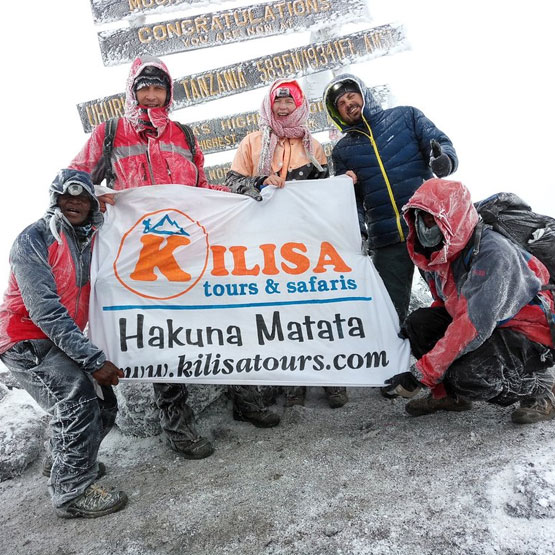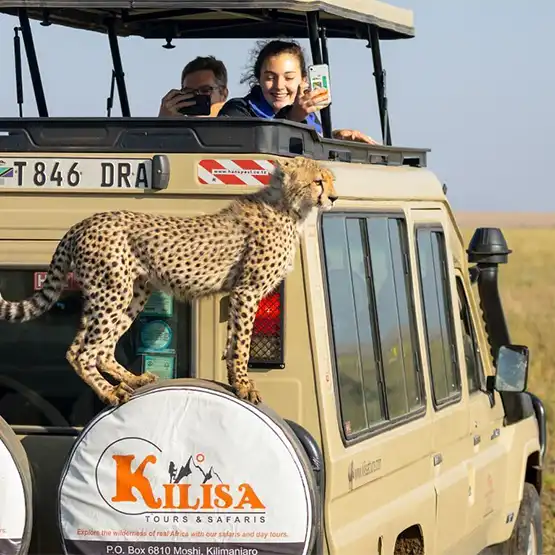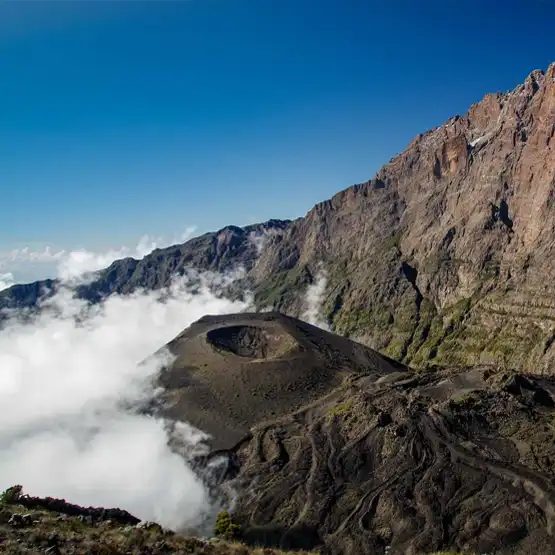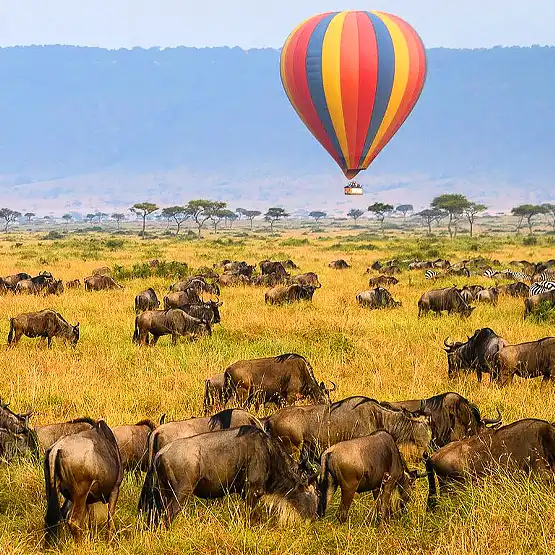Booking a Kilimanjaro climbing tour is more than simply making a reservation; it’s embarking on an adventure of a lifetime. With over 35,000 climbers attempting the summit annually, the popularity of this trek is unparalleled. But how do you ensure your booking process is as seamless as the journey itself?
Understanding the history and logistics is key. Since its first recorded ascent in 1889, Mount Kilimanjaro has become a bucket-list destination for adventurers. Statistics show that the success rate varies widely based on the chosen route and preparation, which underscores the importance of researching and selecting the right tour operator.
- Research and choose a reputable tour operator like Kilisa Tours.
- Select the appropriate climbing route and package that fits your fitness level and schedule.
- Complete the booking form on the operator’s website and submit necessary personal details.
- Understand the costs, inclusions, and payment schedule. Pay required deposits or full amount as needed.
- Prepare by following recommended training routines and gathering essential gear.
- Confirm travel documents, vaccinations, and insurance coverage before departure.
How to Book a Kilimanjaro Climbing Tour with Kilisa Tours
Booking a Kilimanjaro climbing tour with Kilisa Tours is a straightforward process designed to ensure your adventure starts on the right foot. First, visit their website and explore the various climbing packages available. You can choose based on the number of days, routes, and level of difficulty. Each package provides clear details about what is included, such as meals, accommodation, and guide services. If you have any questions, their customer support team is readily available to assist you.
Once you’ve selected your preferred package, the next step involves understanding the costs and what’s included. Kilisa Tours provides a detailed breakdown of costs, making it easy to see where your money goes. This includes park fees, camping equipment, and transportation to and from the mountain. They also offer extra services like gear rental and travel insurance, ensuring you have everything you need for a safe climb. Booking is simple and can be done directly through their website.
Preparing for the climb is crucial for success. Kilisa Tours provides a recommended training plan and a comprehensive gear list. This helps you know what physical preparations to make and what equipment to carry. According to this post, the right preparation can significantly increase your chances of reaching the summit. Make sure to follow their advice and start your training well in advance.
As your departure date approaches, Kilisa Tours helps you with the final preparations to make your experience seamless. They offer guidance on obtaining necessary travel documents like visas and vaccinations. You will receive a detailed itinerary and packing checklist to ensure you have everything in place. Also, Kilisa Tours arranges airport transfers and hotel bookings, providing a worry-free start to your adventure. This attention to detail ensures that you’re ready to embark on your Kilimanjaro journey confidently.
Step 1: Selecting the Right Climbing Package
Choosing the right climbing package is the first crucial step in your Kilimanjaro adventure. Kilisa Tours offers various packages tailored to different needs and preferences. These include differences in route, duration, and level of difficulty. It’s important to consider your fitness level, time availability, and trekking experience when making your selection. This ensures you choose a package that suits you best.
The routes available are diverse, each offering unique experiences. For instance, the Machame route is popular and scenic but more challenging. On the other hand, the Marangu route is known as the “Coca-Cola” route and is less strenuous. Some routes take fewer days, while others, like the Lemosho route, extend to give you better acclimatization. Research these routes and select the one that aligns with your goals.
Costs and inclusions should also guide your decision. Kilisa Tours provides a clear breakdown of what’s covered in each package. Look for inclusions like park fees, meals, and guides. Some packages also include extra services like airport transfers and additional hotel stays. Knowing exactly what’s covered helps avoid unexpected expenses.
Don’t forget to check the group size and guide-to-climber ratio. Smaller groups often mean more personalized attention and support. Kilisa Tours typically maintains a high guide-to-climber ratio, enhancing safety and success rates. A more engaged guide team can make your climbing experience smoother and more rewarding. According to this post, having experienced guides significantly impacts your journey.
Step 2: Understanding the Costs and Inclusions
Understanding the costs and inclusions of your Kilimanjaro climbing tour is essential for proper planning. Kilisa Tours provides a transparent breakdown of expenses, helping you see exactly where your money goes. Knowing the costs upfront avoids surprises later. Ensure you read through the entire package details to grasp all inclusions. This clarity helps you budget effectively for your trip.
Typically, the cost includes significant items like park fees, camping equipment, and meals. These essential services ensure a smooth climbing experience. Moreover, the package often covers transportation to and from the mountain, which is a big plus. Kilisa Tours may also offer extras, such as gear rental and travel insurance. It’s wise to consider these additional services for a complete and worry-free journey.
When reviewing what’s included, pay attention to the quality of services provided. Kilisa Tours usually includes professional guides, porters, and cooks in their packages. This ensures that you’re well-supported during your climb. A detailed list of what’s included often looks like this:
- National Park fees
- Camping equipment (tents, sleeping mats)
- Meals and drinking water
- Guides, porters, and cook services
- Transport to and from the mountain
But remember, some personal expenses aren’t covered. These can include tipping your guides and porters, buying personal gear, or getting vaccinations. Understanding these additional costs helps you plan better and ensures you have everything you need. According to this post, budgeting for hidden costs is crucial for a stress-free adventure. Make sure to factor in all potential expenses as you prepare for your climb.
Step 3: Preparing for the Climb – Training and Gear
Getting ready for a Kilimanjaro climb requires proper training and the right gear. Physical preparation is key, as the climb is a strenuous activity that can be challenging. A solid training plan should include cardiovascular workouts, strength training, and hikes. Practicing on varied terrain will help simulate the conditions you’ll face. This preparation helps your body adjust and improves your chances of success.
Cardio exercises like running, cycling, and swimming boost your stamina. These activities strengthen your heart and lungs, essential for the high altitudes you’ll encounter. Incorporating strength training, especially for your legs, back, and core, is also important. Exercises like squats, lunges, and planks should be part of your routine. Setting a training schedule can keep you on track and ensure you’re ready for the climb.
Alongside training, having the right gear is crucial. Proper clothing layers are necessary to manage the different climates experienced during the ascent. This includes a base layer, mid-layer, and outer waterproof layer. Footwear is another key aspect; investing in sturdy, well-fitting hiking boots will make a difference. Don’t forget accessories like gloves, hats, and gaiters.
A comprehensive gear list often includes:
- Quality hiking boots
- Base, mid, and outer layers of clothing
- Thermal socks and gloves
- Sunscreen and sunglasses
- Hydration system like water bottles or a camelback
According to here is the post, equipment like a good quality backpack, sleeping bag, and trekking poles should not be overlooked. These make your trek more comfortable and manageable. Packing the right items ensures you’re prepared for the challenges ahead. Always double-check your gear before departure to avoid any last-minute issues.
Finally, consider renting gear if you don’t want to purchase everything. Kilisa Tours offers gear rentals, providing high-quality items needed for the trek. This can be a convenient option if you lack specific equipment or just don’t want to invest in items you might not use often. Ensuring you have what you need will pave the way for a successful climb.
Step 4: Completing Your Booking and Payment
Completing your booking and payment is a critical step to securing your Kilimanjaro climbing adventure. Once you’ve selected your package, the next step is to fill out the booking form on Kilisa Tours’ website. This form requires essential details like your personal information, chosen dates, and any additional services you may need. Make sure you double-check all the information before submitting. Accuracy at this stage helps avoid any issues later.
After filling out the booking form, you will receive an email confirmation with the payment details. Kilisa Tours offers several payment options to make the process convenient. You can typically pay via credit card, bank transfer, or even using safe online payment systems. The email will provide clear instructions on how to proceed with the payment. Choosing the most suitable payment method for you ensures a hassle-free process.
It’s important to understand the payment schedule outlined by Kilisa Tours. Usually, a deposit is required to secure your booking, with the balance payable closer to the departure date. Here’s a typical payment schedule:
- Initial deposit: 30% of the total cost
- Remaining balance: 70% due 60 days before departure
Make sure you’re aware of the cancellation and refund policies. Kilisa Tours has specific terms regarding cancellations, which can affect your refund eligibility. Reviewing these policies helps you know what to expect in case your plans change. According to this post, understanding these details ensures you are well-prepared and informed.
Lastly, once your payment is confirmed, you’ll receive a final confirmation and detailed itinerary. This includes all the necessary information about your climb, what to bring, and any other preparations. It’s essential to save these documents and keep them handy. This final step ensures everything is in place for your upcoming adventure.
Step 5: Preparing for Departure
Preparing for departure is an exciting and crucial phase before you embark on your Kilimanjaro adventure. Start by verifying that all your travel documents are in order. This includes your passport, visa, and any necessary vaccinations. Make sure your passport is valid for at least six months beyond your trip dates. Having all documents ready avoids last-minute hassles.
Next, double-check your packing list to ensure you have all the necessary gear and supplies. Kilisa Tours provides a comprehensive list of items required for the climb. Pay attention to essentials like layered clothing, sturdy hiking boots, and personal medical supplies. Don’t forget to pack your travel documents and copies of important papers. Being well-prepared with the right gear makes your climb more comfortable.
It’s also essential to confirm your travel arrangements and accommodation. Ensure your flights are booked and any pre or post-climb accommodations are confirmed. Kilisa Tours often assists with airport transfers and lodging, making the process smoother. If you have any special requirements, now is the time to communicate them. According to this post, early preparation helps prevent last-minute stress.
Another key aspect is managing your finances for the trip. Make sure you have enough funds to cover any expenses that may arise during your journey. Consider carrying a mix of payment methods, such as cash, credit cards, and traveler’s checks. Inform your bank about your travel plans to avoid any issues with card transactions. Being financially prepared ensures you can handle any situation that comes up.
Finally, take care of your health and fitness leading up to the trip. Stick to your training plan and maintain a healthy diet. Get plenty of rest and stay hydrated. In the days before departure, avoid any strenuous activities that might lead to injury. Good health and fitness are your best allies for a successful climb.
Choosing the Best Season for Climbing Kilimanjaro
Deciding on the best season to climb Kilimanjaro can greatly impact your experience. Kilimanjaro has two main climbing seasons, which coincide with its dry periods. These are from January to mid-March and from June to October. During these times, the weather is generally stable, making the trek more manageable. Understanding these seasons helps in planning your adventure effectively.
The January to mid-March window is typically colder, but it offers clearer skies and fewer climbers compared to other times. This season is ideal if you prefer a quieter ascent with stunning views. However, temperatures can drop significantly at night, so proper gear is essential. The scenery during this time is breathtaking due to clear vistas of the surrounding landscapes.
From June to October, you’ll find the warmest weather on Kilimanjaro. This period coincides with summer vacation in many parts of the world, leading to higher traffic on the mountain. Despite being busier, it’s often considered the optimal time for first-time climbers due to milder conditions. It’s crucial to book your climb well in advance during this season since slots fill up quickly.
Another lesser-known option is climbing during the shoulder seasons of March and November. Although these months have brief rain showers, they also offer unique opportunities like fewer crowds and lush landscapes. Some experienced climbers prefer these times for a more solitary journey. Adjusting your preparation can make climbs during rainy periods just as rewarding.
A table outlining different factors across seasons provides a clear comparison:
| Season | Weather | Crowds | Visibility | |||||
|---|---|---|---|---|---|---|---|---|
| January – Mid-March | Cold and Dry | Moderate | Clear Views | |||||
| June – October | Warm and Dry | Busy | Mild Visibility | |||||
| March & November (Shoulder) | Mild Rain | Lesser Crowds |
| Role | Responsibilities |
|---|---|
| Guide | Navigate trails, monitor health, provide support and motivation, share local knowledge |
| Porter | Carry gear, set up camps, assist with food preparation, support logistics |
Safety is another critical factor provided by experienced guides. They are trained in first aid and can handle emergencies effectively. Familiarity with the mountain’s weather patterns allows them to make informed decisions. This high level of preparedness ensures climbers’ well-being. Trusting experienced guides and porters enhances safety and enjoyment on Kilimanjaro.
What to Expect During Your Kilimanjaro Adventure
Your Kilimanjaro adventure will be filled with breathtaking landscapes and diverse climates. As you ascend, you’ll experience five distinct ecological zones. Starting in lush rainforest, you’ll encounter unique wildlife and vibrant flora. Higher up, you’ll traverse moorland and alpine desert zones. Finally, you’ll reach the icy summit, a stark contrast to the greenery below.
Daily routines on the climb revolve around hiking, meals, and rest. Mornings typically begin early with a hearty breakfast. You’ll spend most of the day trekking, stopping for lunch and short breaks. Evenings include dinner and a briefing about the next day’s journey. This routine helps maintain energy and ensures you’re prepared for the challenges ahead.
The physical exertion varies each day, with some days being more strenuous than others. Expect to hike for 4-7 hours daily, depending on the route. Some sections are steeper and more challenging, requiring slower, deliberate movements. Your body’s response to altitude will also influence your pace. It’s essential to listen to your guide and take it slow for acclimatization.
Nights on Kilimanjaro can be quite cold, especially as you gain altitude. Make sure to have a warm sleeping bag and adequate thermal clothing. Campsites are set up by the porters, providing a place to rest and rejuvenate. The higher you climb, the more pristine and serene the environment becomes. Stargazing at high altitudes offers spectacular views of the night sky.
The highlight of the adventure is reaching Uhuru Peak, the highest point in Africa. This involves a night summit attempt, starting around midnight. The final ascent is challenging due to the steep and cold conditions. However, the reward of witnessing the sunrise from the summit is unparalleled. Successfully reaching the top is a moment of triumph and awe.
- Experiencing diverse ecological zones
- Adhering to a daily trekking routine
- Managing physical exertion and acclimatization
- Preparing for cold nights at higher altitudes
- Summit attempt and the reward of reaching Uhuru Peak
Throughout the journey, you’ll create lasting memories and bonds with your fellow climbers and guides. The shared experience of overcoming challenges together fosters a sense of camaraderie. Kilisa Tours ensures that your adventure is safe, enjoyable, and unforgettable. This once-in-a-lifetime experience is something you’ll treasure forever.
Book Your Tour As Your Choice With Tailor Made Tour
Whether you are ready for Tanzania Safari Dream or Kilimanjaro Adventure or Beach Relaxation for a few days or a few weeks long, our experts will create an itinerary from scratch, fully tailored to your wishes. Want to visit a beautiful destination or start an adventure to reach the top, or relax in a paradise, we will make it happen.
Testimonials
What Our Traveler Say About
Our Tour Services
The 7 days Lemosho route Kilimanjaro trek exceeded our expectations. The route is so beautiful and we enjoyed tackling the mountain with experienced guides - Bakari and Nickson. They were supportive from start to finish in all the aspects of the trek, starting with the technical strategy on the speed, rests and ensuring that we were healthy through regular checks.
Traveling with my 6 members of my family of ages between 8 and 73 is always a complex task with many moving parts. We had to arrange for Mama and Poppas dietary restrictions, accommodations, easy access for Mama and off-course places with a pool and kids activities for Lil Poppa and his teenage sister Anna.
To take a trivial example which of usev undertakes laborious physical exercise excepto obtain advantage from has any right toMy bothers and I shared one of the most incredible experiences in Tanzania as we trekked up Kilimanjaro. Our host Naick of Kilisa Tours & Safaris is the man behind our success.
Our safari to Lake Manyara, Ngorongoro and Serengeti with Kilisa Tours and Safaris for exceeded all our expectations in every way. We were impressed by the high standards set right from our pickup at the airport, during the trip to the good byes. Nothing was left to chance as every detail had been well planned for.
We could not have asked for a better experience on Kilimanjaro. Everything about this trip with this local operator was top notch. Starting with the booking with Naick who made it smooth and easy with his timely responses and advice. Payment was easy and they took care of all the logistics that all we had to do was present ourselves at the KIA.
We have visited Tanzania before, but this was our first time trekking Kilimanjaro. We are truly thrilled with our decision to choose Kilisa Tours & Safaris for our adventure, as they provided exceptional support throughout the trek.
Contact Info
Get In Touch
About
Kilisa Tours and Safari considers the significance of securing the earth and the networks in which we work as one of our most noteworthy needs
Useful Links
- Safari Faq's
- Payment Policy & Cancellation
- Things to take on safari
- FAQs
- Visiting Moshi?
- Design a Safari
- Latest News & Blog
- Terms and Condition
- Contact Us
Our Partners
Kilisa Tours | Copyright © 2025 | All Right Reserved | Web by SechaPX
- Setting & privacy
- Faqs
- Support





